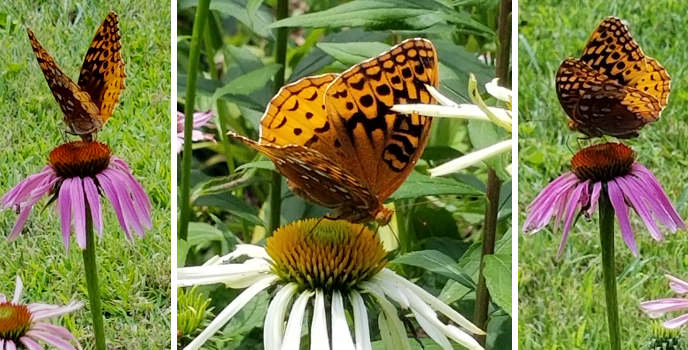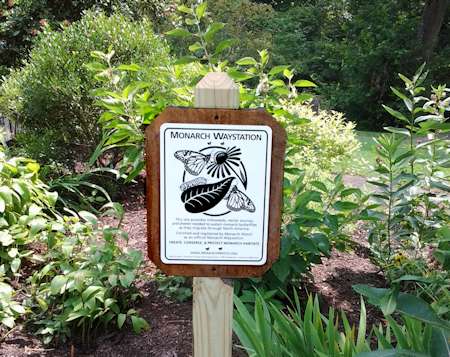In the summer months, butterflies abound in the wildflower garden surrounding the Arboretum Visitors Center.
Habitat for Butterflies

The Wildflower Garden that surrounds the Visitors Center is a natural magnet for butterflies and moths. The diversity of plantings privides nectar and shelter for many species of butterflies including: Fritillary, Skipper, Sulpher, Swallowtail and the commonly-recognized Monarch.
According to an article by Dr. Will Witte, Retired Professor of the UT Forestry, Wildlife, and Fisheries Department, the requirements for a butterfly garden include sunshine, shelter from winds, a diversity of plants to provide for a long blooming season, plentiful nectar, a mud puddle or water fountain, the total (or nearly-total) absence of pesticides, and weedy areas for the caterpillars. Recommended plants include: butterfly bush, thistle, ironweed, bee balm, honeysuckle, garden phlox, milkweed, buttonbush, hibiscus, and clethra. The Arboretum Wildflower Garden has many of these plants plus others known to attract butterflies.
To view photos of some of these wildflowers, click the “Visitors Center Wildflower Garden” link on the Photo Gallery web page or print a Wildflower Garden List. Learn to identify butterflies and moths on naturalist, Kris Light’s web site.

A project sponsored by the UT Arboretum Society is the creation of a Monarch Waystation. The Waystation is a program of the Monarch Watch Organization with a mission to create, conserve, and protect monarch habitats. The necessary habitat includes the milkweed plant which grows near the north entrance of the Visitors Center.